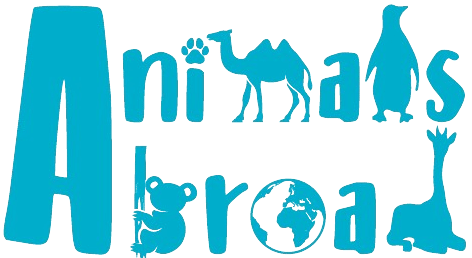Our journey to Okonjima Nature Reserve started with a mission: find a pangolin. Our youngest Mason had declared it his favourite animal long ago, and we were determined to try to see one in the wild.
Although Okonjima does offer pangolin tracking tours, they’re only open to guests aged sixteen and up. But the more we read about the family-run resort—home to elusive species like leopards, brown hyenas, and white rhinos—the more we knew it was a place we couldn’t skip.
Set in the heart of Namibia, Okonjima is a private conservation reserve with a strong focus on research and education. You can’t self-drive here—guests must be accompanied by guides at all times—but the range of activities, from animal tracking hikes to night drives and the AfriCat Foundation’s educational center, made it perfect for a family safari.
Here’s our two-day experience at Okonjima Reserve.
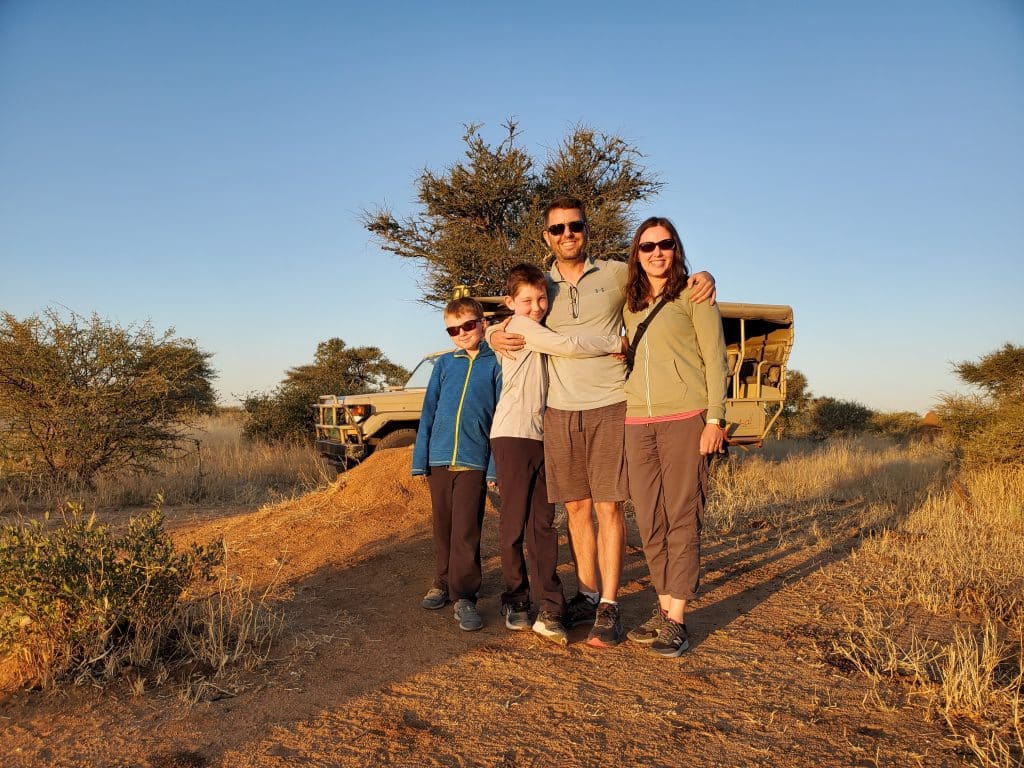
Day 1: A Rhino Welcome
We didn’t have to wait long for our first wildlife sighting. We weren’t even inside the conservation area when Jackson shouted, “Rhinos!” We’d had a few too many “rock” sightings lately, so we almost ignored him. But he persisted, so we backed up—and there they were. Four white square-lipped rhinos (according to Mason), half-hidden in tall grass, just off the side of the road.
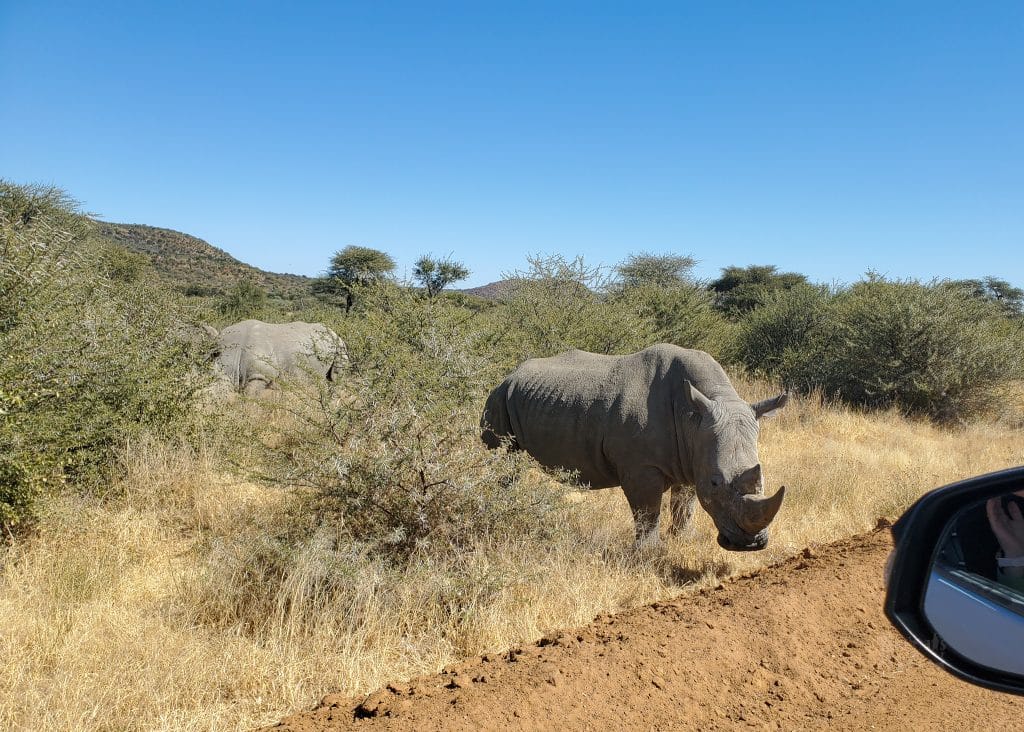
The encounter was quiet at first. Then, one by one, the adult rhinos stepped onto the road, their enormity in full view. The small herd moved into the centre of the road, creating a defensive triangle. It was then that we realized why. A few feet off the road, in the deeper grass, was a baby rhino.
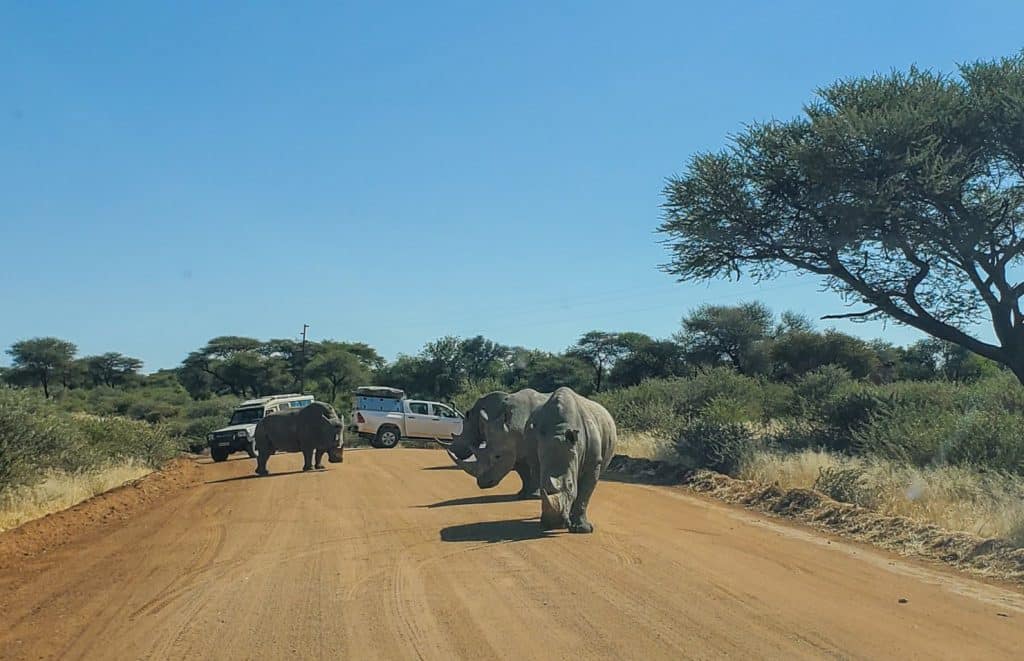
It was clear we were being watched, and we were too close. Then, the situation became more uneasy as the they moved toward us, pushing us back from the tiny calf. Slowly, we reversed. Only when the rhinos crossed the road and lay down did I feel the tension lift. A powerful reminder that out here, we are the guests.
Camping in the Wild
Okonjima is known for its luxurious lodges and cabins, but even the campsites are thoughtfully designed with comfort and privacy in mind. Our site felt remote and wild, surrounded by trees and rustling bushes. The peaceful open-air shower—simple but hot—was a highlight after dusty days. While smaller animals like antelopes and hares roamed freely, we were always mindful that bigger visitors weren’t out of the question.
Check out some of the other campgrounds we visited on our safari. Learn More: Camping Across Southern Africa
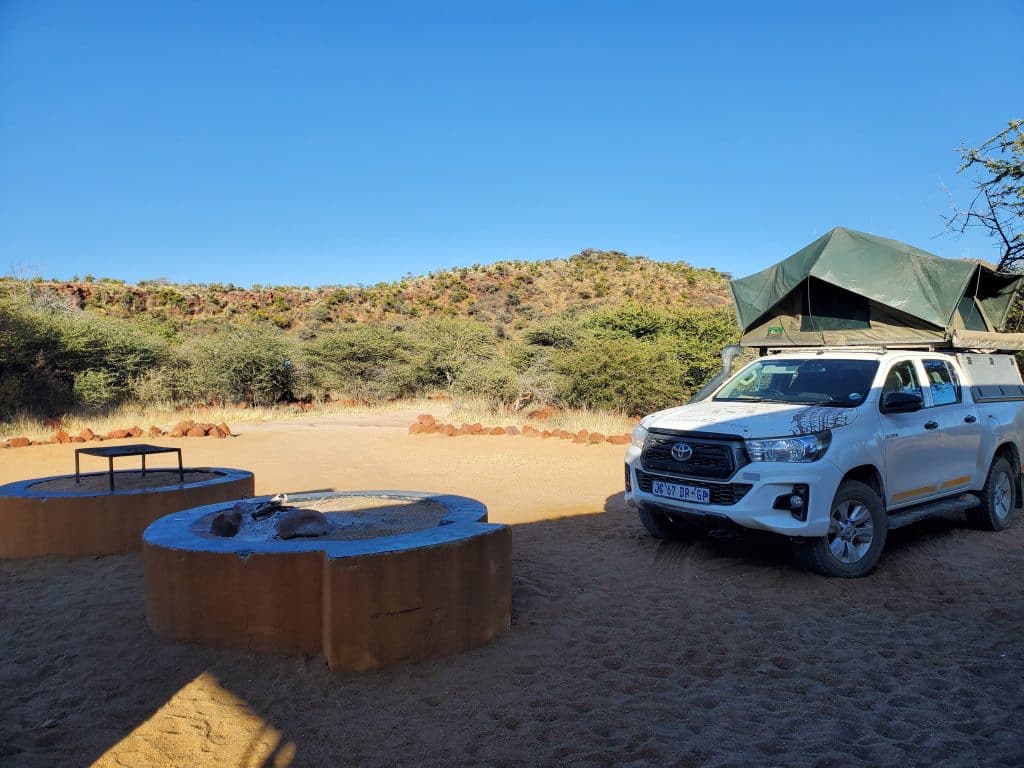
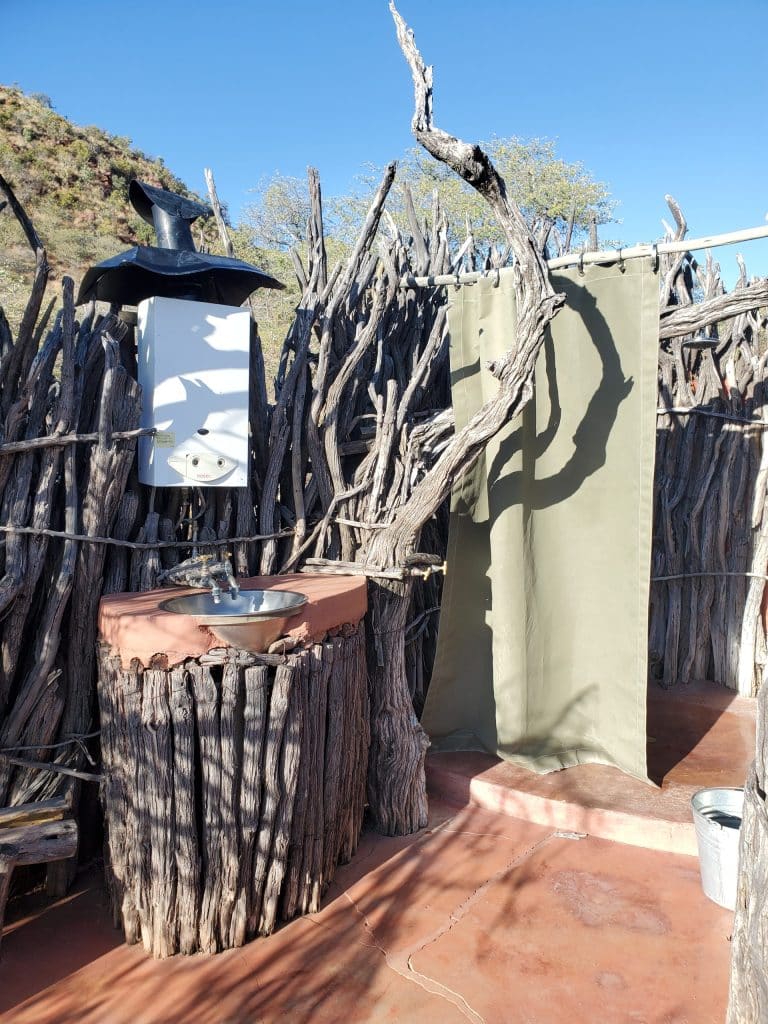
Leopards in the Grass
After setting up camp, we met Daniel, the campground manager, who helped us plan our next few days. We didn’t waste any time and hopped on the Leopard Tracking Tour that afternoon.
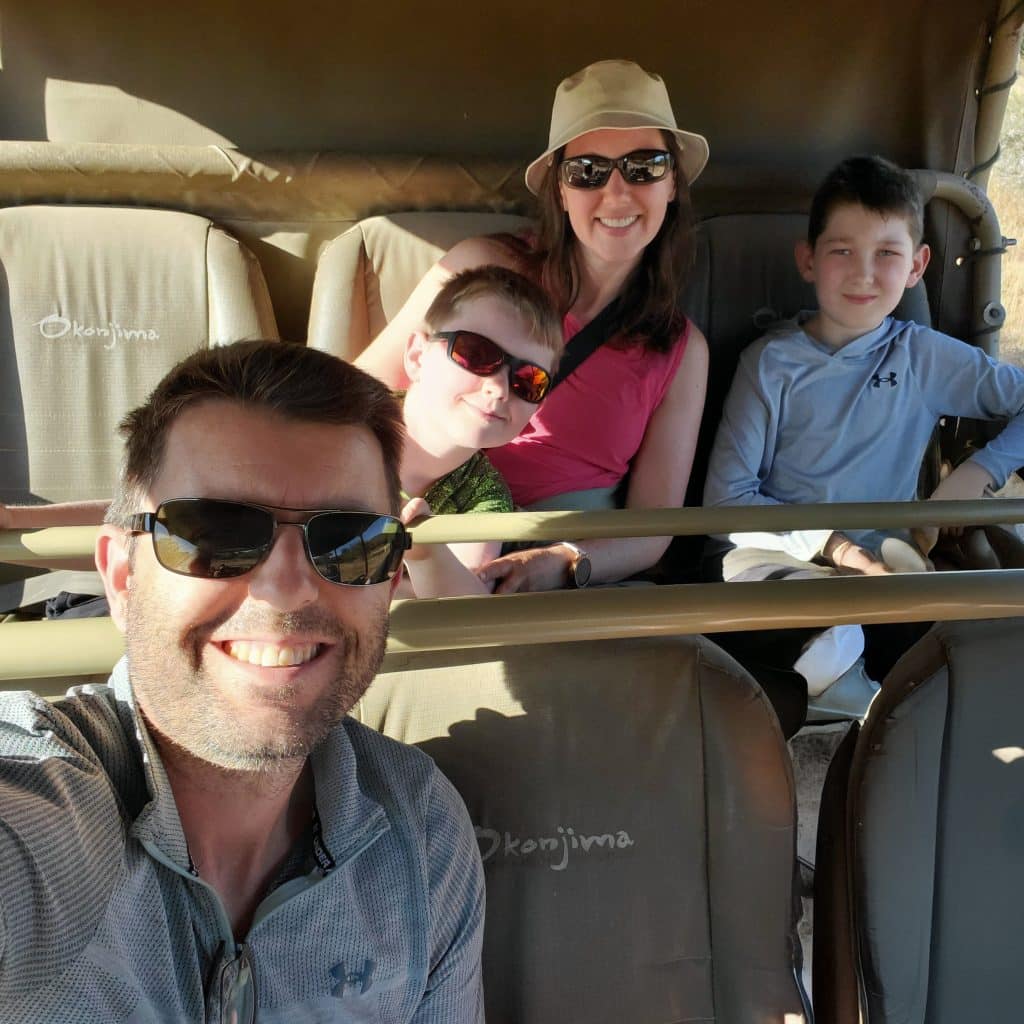
Some of the leopards in the reserve wear radio collars as part of conservation efforts. With help from a tracker named Felix, we headed deep into the reserve in search of one. The ride was through rough terrain, and the boys clung close as thorny branches slapped the sides of the open vehicle. Along the way, we passed waterbuck, a leopard tortoise, and a giraffe family with a wobbly-legged baby.
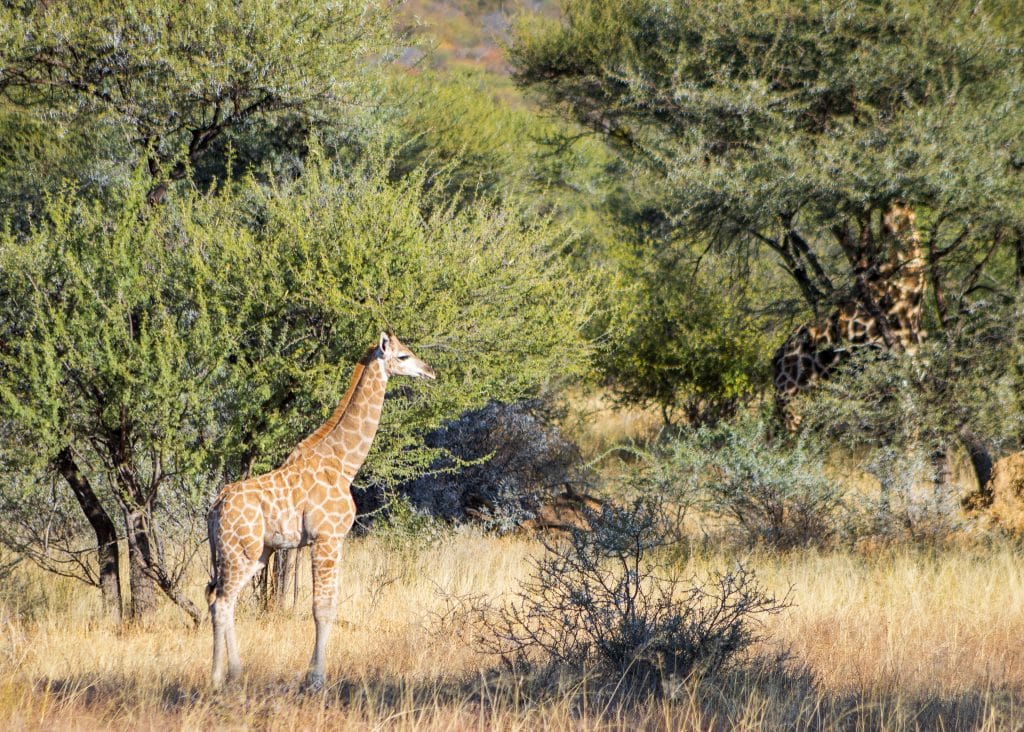
Then the truck stopped. Felix had spotted something. I scanned the horizon, but saw nothing—until Derek pointed just beside us. In the grass, a pair of golden eyes stared straight at me. A female leopard, perfectly camouflaged and completely still.
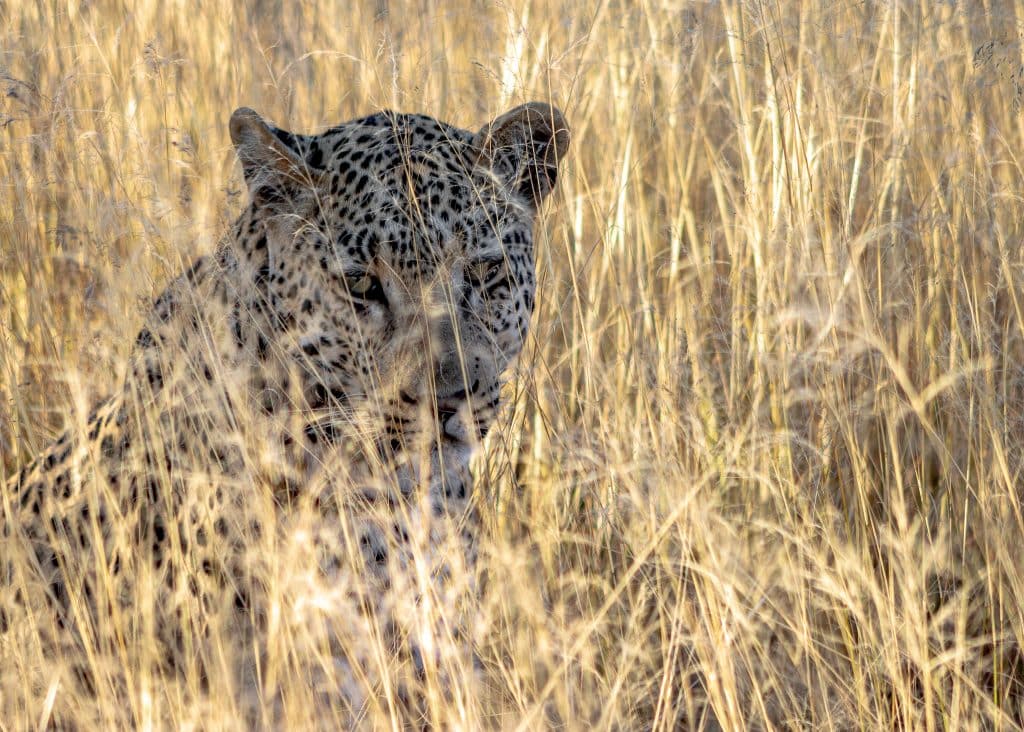
Minutes later, we saw a second leopard—a male. This was rare. Leopards are solitary, and territorial conflicts are common. The male kept his distance, hidden within the grass.
Can you see him?
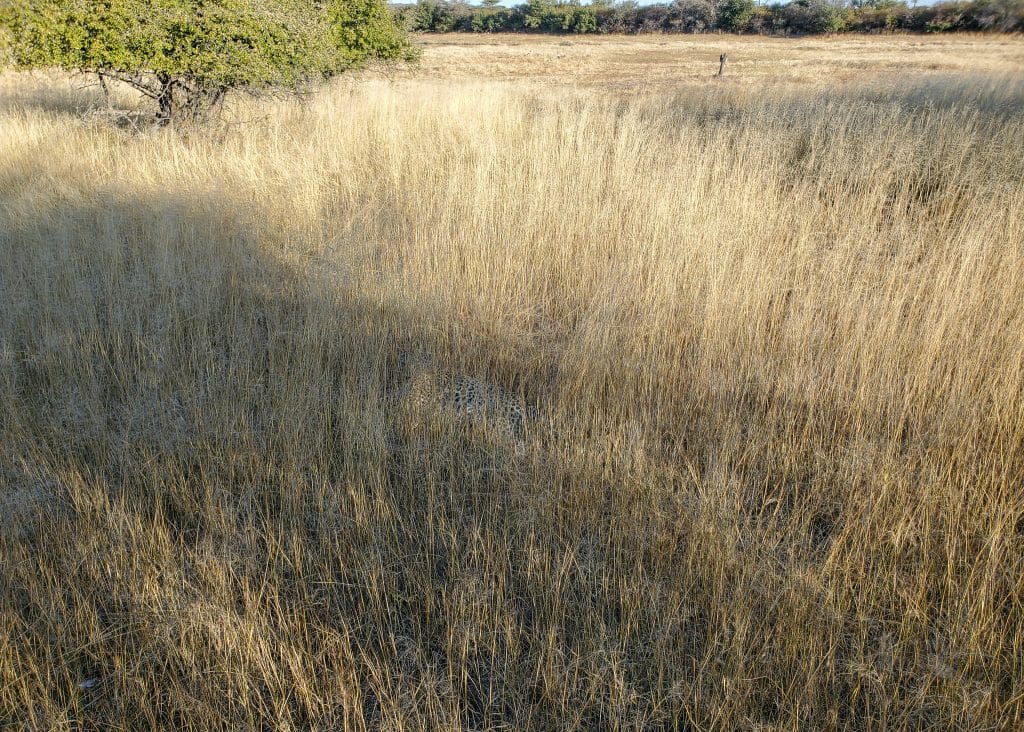
Mason, age 8, sat safely between adults, while Felix kept an eye on the cats. At one point, the male approached the vehicle. Sensing small prey inside, perhaps? Felix quickly reversed, just enough to assert our boundary. It worked.
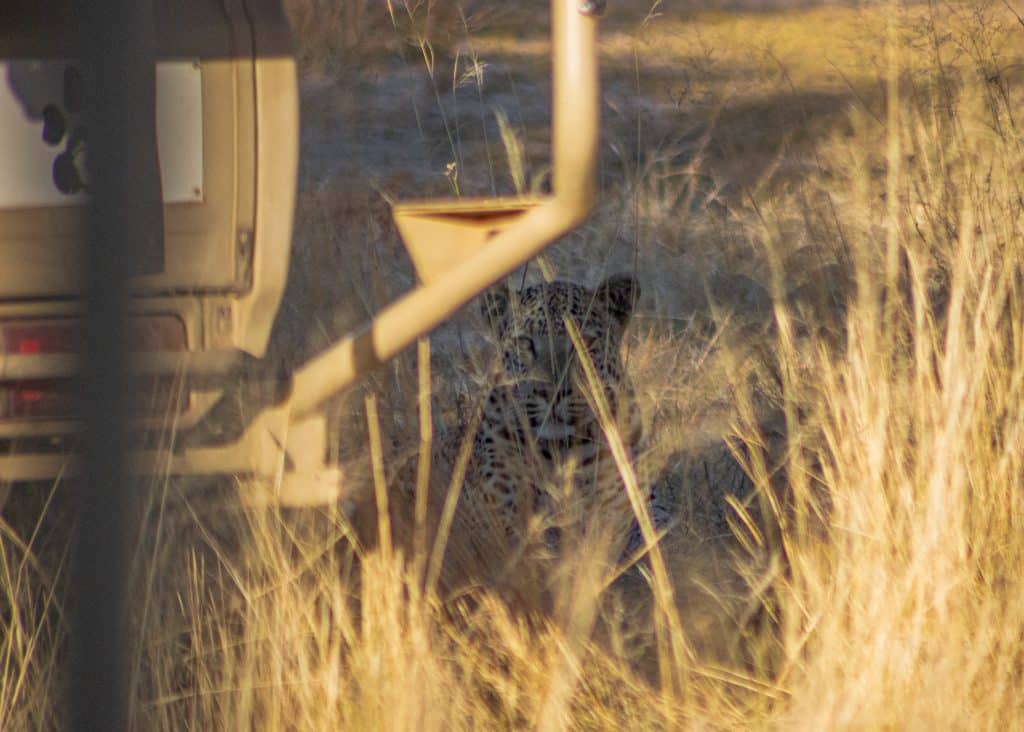
We spent close to an hour observing them. The boys stayed still and quiet, fascinated. I couldn’t help but feel awed by the power and presence of these predators.
Curious about how to prepare kids for safari? Check out our post, Safari with Kids: Tips from the Road
Day 2: AfriCat Education Centre
The following day, we visited the AfriCat Foundation’s Carnivore Care & Information Centre. Established in the early 1990s, AfriCat supports conservation efforts through education and research, especially in the conflict zones between farmers and carnivores.
The boys were captivated by the interactive exhibits and medical center tour. Felix explained how some rescued animals become permanent ambassadors, while others are rehabilitated and released. We ended the visit with a drive through the enclosures, where we saw five cheetahs—four siblings rescued as cubs after their mother was killed.
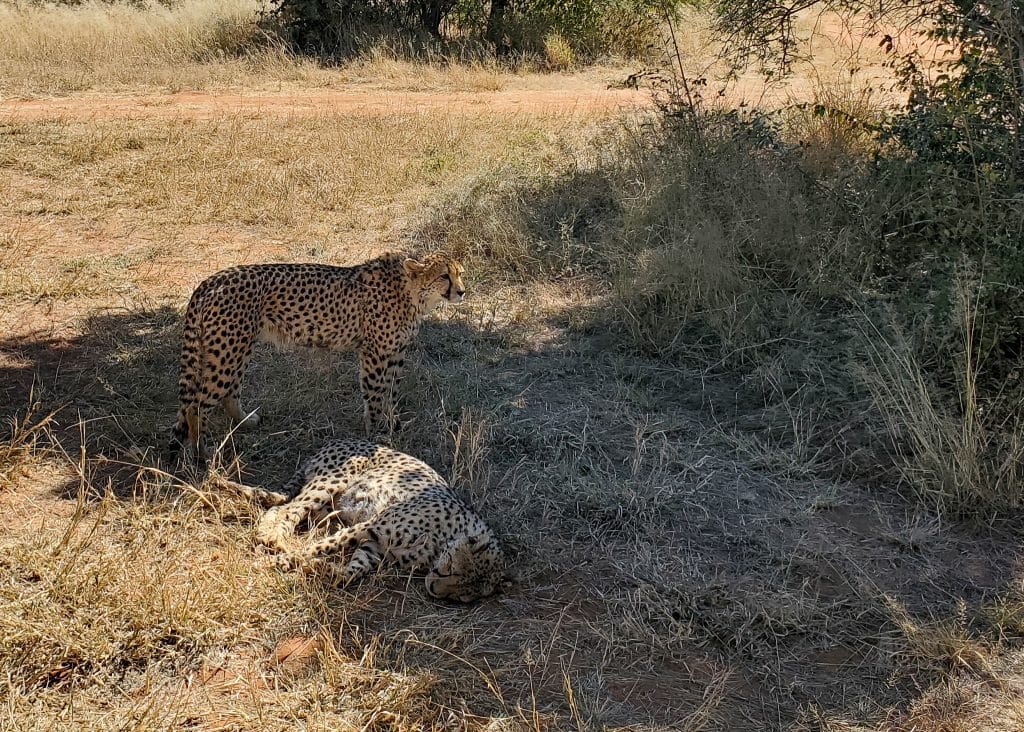
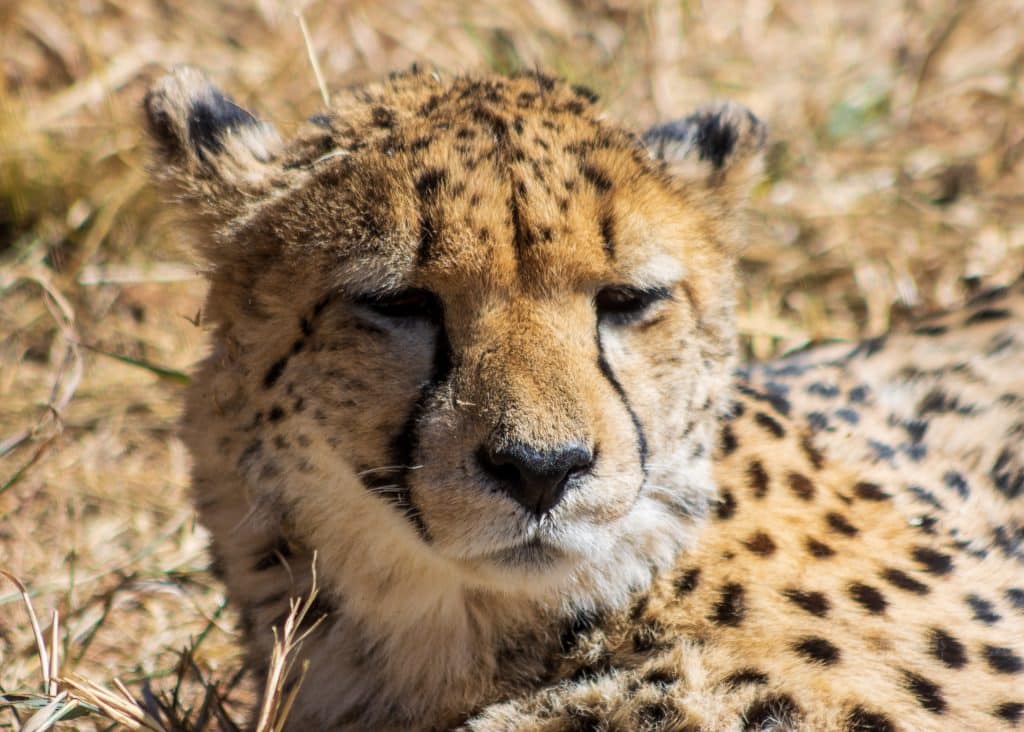
Seeing the cheetahs up close was incredible; however, observing them in an enclosure is vastly different. Still, it opened important conversations with the boys about wildlife protection, conservation, and the complicated balance between humans and nature.
The Wild After Dark
Our final activity was a night drive. With the Milky Way guiding us, we set out into the blackness, headlights off until we left camp. Jackson rode up front, peppering Felix with questions, while Mason snuggled into my side, part excitement, part fearful of the dark.
Bumps and sudden drops kept us alert. Then—thud. We’d hit an enormous aardvark hole, and the tire went flat. Felix changed it quickly, but watching him outside the vehicle in the pitch black was nerve-wracking.
Despite the wind keeping animals tucked away, we still spotted a brown hyena, jackals, impala, giraffe, and wildebeest. But the real thrill came from the experience itself, the boys’ first night drive. Exploring the park in complete blackness, scanning for movement, searching for the glint of sparkling eyes in the brush, a reminder that the wild never truly sleeps.
Safari Memories in the Making
Our time at Okonjima was short but unforgettable. From rhinos guarding their young to leopards stalking silently through grass, Okonjima didn’t just offer us sightings—it provided us stories we’ll be telling for years.
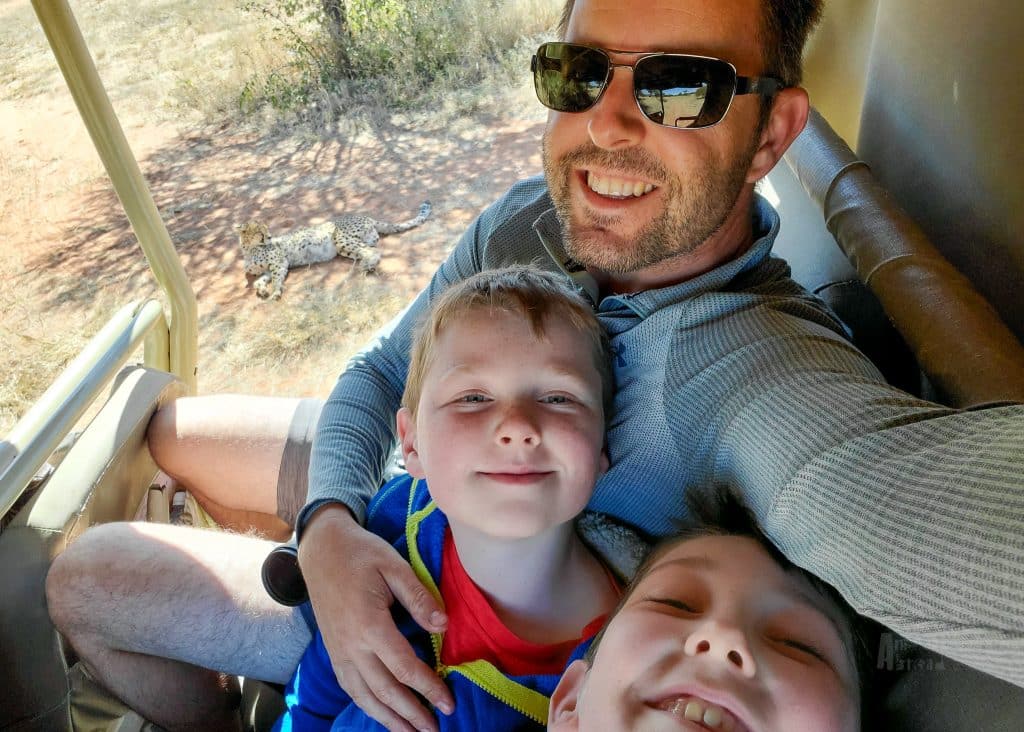
Ready to Create Your Own Wild Adventure?
Check out these related posts to help plan your trip:
- 51-Day Africa Safari – Part 1: South Africa & Namibia’s Coast
- 51-Day Africa Safari – Part 2: Namibia’s Etosha & Caprivi Strip
- 51-Day Africa Safari – Part 3: Victoria Falls & Botswana
- Our Best and Worst Day on Safari
- Camping Safari in Africa: Know Before You Go
- Camping Across Southern Africa: A Rundown of our Safari Campsites
- Navigating Border Crossings in Southern Africa
- Safari with Kids: Tips from the Road
- Etosha NP with Kids: A Family Safari to Remember
- Exploring the Caprivi Strip with Kids
- The Smoke that Thunders: A Trip to Victoria Falls
- Into the Wild: Chobe NP with Kids
- Sunset Cruise on the Chobe River: A Photo Journey
- Living Giants: A Photo Journey Through Nxai Pan National Park
